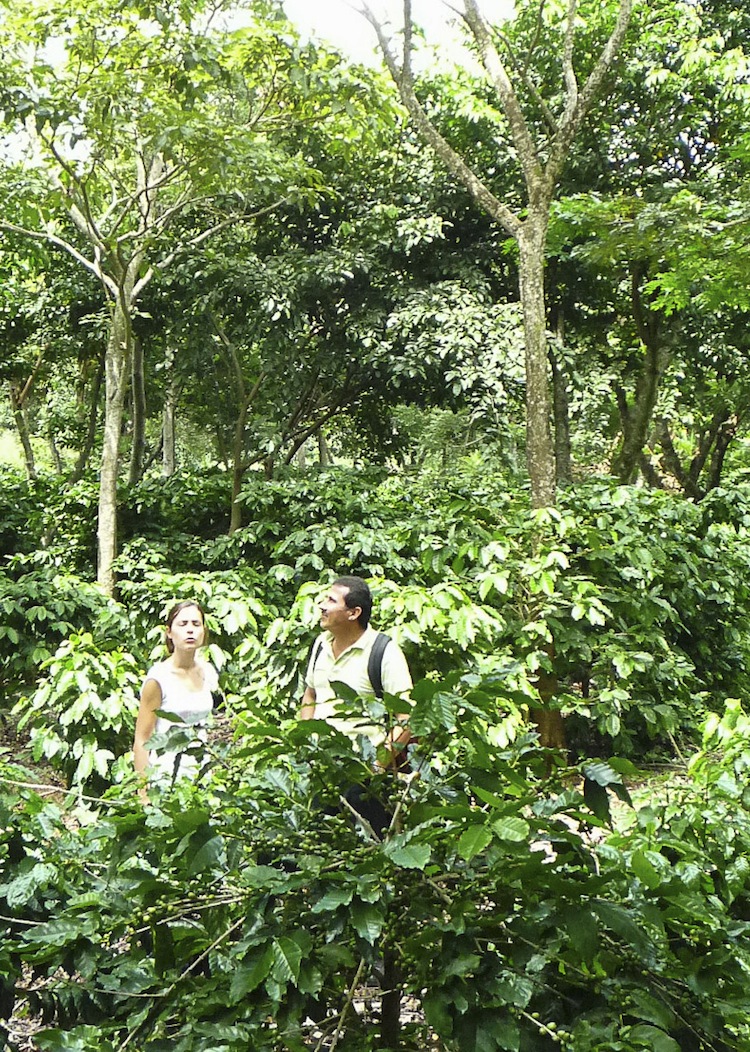
Coffee drinkers are encouraged to buy environmentally-friendly coffee, whether it be certified, organic or shade coffee, but how effective are these ways of growing coffee at combating climate change?
Researchers at the Natural Resources Institute, Bangor University, Wales, and the Tropical Agricultural Research and Higher Education Centre, Costa Rica (CATIE) have recently published findings in the scientific journals Agricultural Systems and Agriculture Ecosystems and Environment that may go some way to answering this question.
Their study was based on coffee farms and field experiments in Costa Rica and Nicaragua and investigated whether it would make more financial and climate sense for farmers to grow coffee with or without shade and under high or low use of fertiliser.
Dr Jeremy Haggar, Head of Agriculture, Health and Environment at NRI, said: "Although there are short-term economic advantages to growing sun coffee, farmers in Central America have been reverting to shaded systems as they are cheaper to maintain when coffee prices fall."
"Nevertheless, the productivity of coffee with regulated shade can be increased with fertilisation, while storing carbon in trees minimises the carbon footprint. Identifying the management options to achieve this will depend on technical support to farmers and incentives to make that investment."
Dr Martin Noponen, a joint Bangor University-CATIE PhD student and lead author of both studies, said: "Our results suggest that in shaded coffee, the increase in greenhouse gas emissions from intensification of production can be compensated for, or in some cases even outweighed, by the increase in uptake of atmospheric carbon dioxide into above-ground and below-ground tree biomass".
John Healey, Professor of Forest Sciences at Bangor University, said: "It's important to remember that, although shaded coffee farms might store more carbon and therefore be good for the climate in one sense, if the coffee yield is lower, then coffee farmers collectively may choose to farm a larger area of land in order to maintain their income. This could mean that some encroach onto forested areas with negative impacts on climate, biodiversity and other services provided by forest ecosystems."
The results suggest that reducing carbon emissions through intensification can help coffee farms combat climate change. Compensating farmers for not converting to more profitable (but less environmentally-friendly) sun coffee would cost from 9.3 to 196.3 US$ per tonne of carbon emissions avoided – a value range that is for the most part above current international carbon market prices.
Intensifying the productivity of existing shaded coffee, as an alternative to extending coffee production onto existing forest land, could reduce carbon emissions that cause climate change.
The two papers "Intensification of coffee systems can increase the effectiveness of REDD mechanisms" and "Sink or source – the potential of coffee agroforestry systems to sequester atmospheric CO2 into soil organic carbon" are published open-access in the journal Agricultural Systems (on 1st July 2013 http://dx.doi.org/10.1016/j.agsy.2013.03.006) and in Agriculture, Ecosystems and Environment (on 1st August 2013 http://dx.doi.org/10.1016/j.agee.2013.04.012) respectively.
Story by Bangor University

